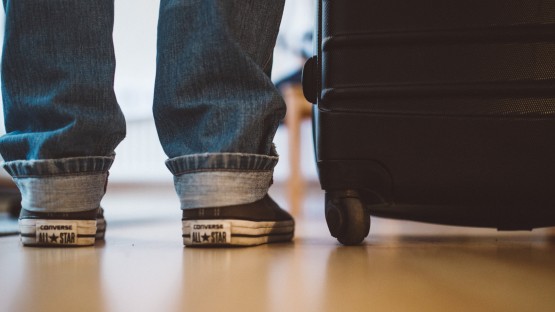Expat Pets - Relocating with Your Best Friend

Should I Bring My Cat or Dog Along?
Even when we love our pet companions as family members, for some people deciding whether to bring their furry companion along on their international adventure is a very legitimate worry. This may be especially the case when moving solo for a work assignment. Thinking about whether you will be able to appropriately care for you dog or cat in a new city, juggling a new work and travel schedule, speaks of a responsible and loving pet owner, and not of a selfish person who’d rather have the easy way out.
Speaking to trusted friends and family about it will oftentimes ease the decision-making process and provide you with a support structure. You might be surprised to find out that a close friend or relative is willing to:
- keep Whiskers or Milo temporarily until you settle in your new locale and are ready to fetch them;
- adopt your furry friend as their home companion or help you in the process of finding a loving home; or
- a close family member is willing to care for your pet companion if your stint abroad is relatively short and you will be visiting in the interim (say, up to 18months).
These are not long-shot scenarios – I have seen them happen many more times than I would have ever reckoned. Independently of the particular outcome, however, speaking to someone you trust about your concerns of bringing your dog or cat along will provide you with a useful soundboard and moral support.
Expat Life — Not for Every Animal
Kenneth, for example, never thought he would move abroad for work. When his company asked him to relocate to Japan, his gut instinct was to bring along his four-year old Labrador, Dolly. Although he could only imagine that relocating with Dolly might be quite the process, he figured she would adjust once they settled in. Three months after arriving in Kyoto, Kenneth could not but notice that Dolly was still ill-adjusted. She was always very anxious when he arrived home after a very long work day, and started chewing on the sofa’s leg — something she had never done before. In the United States, Kenneth had a fenced backyard where Dolly roamed about freely, and his working days were definitely not so long. Kenneth hired a midday walker for Dolly (an expensive service), with only mild improvements.
He kept the worry to himself for a couple more months, until he finally spoke to a trusted friend back home about it. To his surprise, his friend offered to adopt Dolly. When Kenneth flew back home for holiday, he brought Dolly to him. Kenneth certainly missed his furry best friend, but Dolly was a healthy and happy dog again, and this gave Kenneth deep comfort. In fact, Kenneth’s only regret was not speaking to a friend about what moving with Dolly might imply for her – doing so would have spared her the moving ordeal.
Preparing to Go
Whether Whiskers is coming along with you or going to a new home, there is some important planning to do. In either event, the moving process is characterized by a flurry of activity that dogs and cats sense as a disruption, and that can upset their moods. This includes the moving, packing, or ridding of furniture and other belongings – in their eyes, a nonsensical shuffling of their living space.
Keep their resting and feeding places unchanged. Even if you are running around trying to sort out all the moving details, do stop to give him a good pet or rub on his belly on occasion – he will find it very comforting. If you choose to leave Whiskers or Milo behind, make sure he has settled in his new home. It is best to drop him off a few days before your departure, thus sparing him the whirlwind of activity and movement so common during the last days of the move. I suggest leaving an old, unwashed t-shirt of yours with him. Your smell you help comfort your furry friend during this transition.















